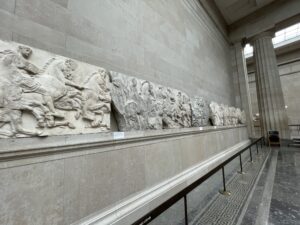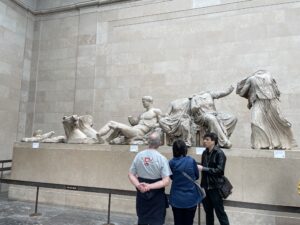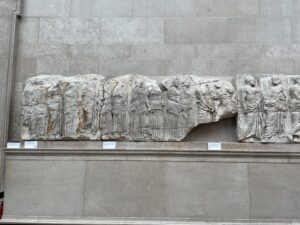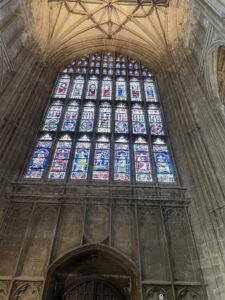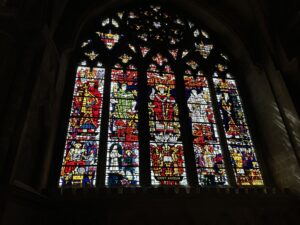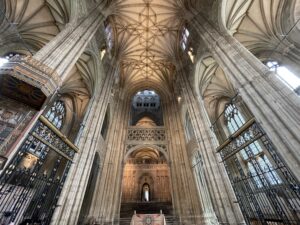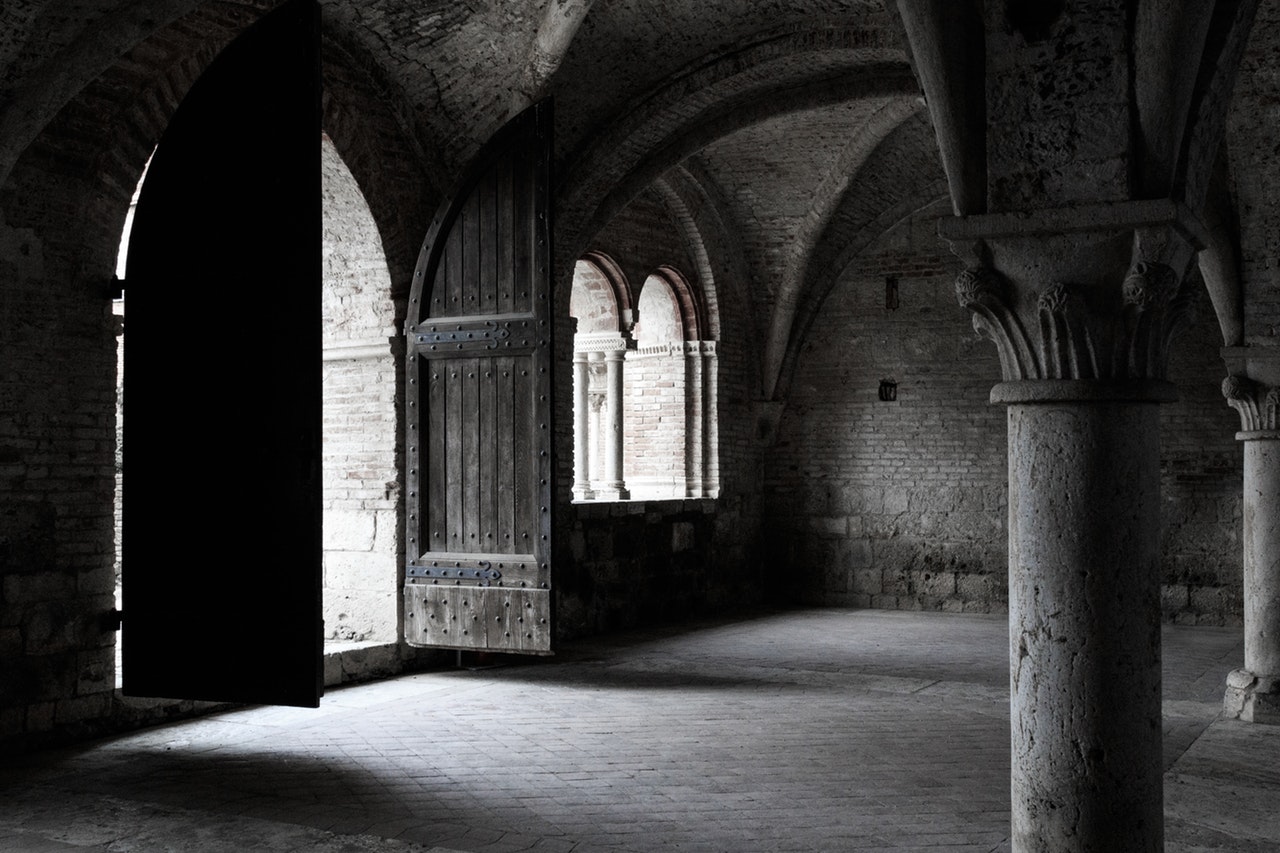As someone who has long been in love with the Classical, seeing Medieval art and learning about how much they wanted to distance themselves from the Classical was especially interesting for me. At first, I was like “why would anyone want to distance themselves from Classical art?!” It’s beautiful, realistic (though idealized, but that’s a different conversation), detailed, and magnificent. But this course allowed me to physically walk through Medieval architecture and see face-to-face Medieval artwork…I was just immersed in the Gothic, something that I had not previously been so invested in. And it is magnificent in its own light. The pointed peaks and angles of the cathedrals, specifically the one I attached here in Canterbury, and the colorful and intricate stained glass were so impressive. Similarly to seeing ancient works, I was just wondering how in the world did they build massive and detailed cathedrals? How long did it take to paint the stained glass windows? It was spectacular walking through the artwork that paved its own cultural road, that being away from the Classical.
And through that immersion and learning more about the individuality of Medieval art I was finally able to understand why Medieval England made it such a point to carve their own style: to create something new, something uniquely English. The British Empire had been, and still was at the time, a powerful global force. The British had taken control of many parts of the world, and through that colonization had taken bits and pieces of other cultures and thus integrated that into their own culture. And of course, in the Western world I would argue that the greatest influence was the art and architecture of Ancient Greece (and Rome, though I think Rome ripped Greece off and got all the credit). Greek art and architecture had become so ingrained in Western culture in general, that the West kind of became synonymous with the Greek influence. But Britain wanted something different from the Classical; they wanted to forge new styles of art and architecture (aka the Gothic, as represented beautifully in Canterbury) and assert their own influence not only as conquerors, but as the bearers of a new cultural style. And I will say, looking at the Gothic versus the Classical today, the British achieved their goal. The high pointed ceilings in the cathedrals look nothing like the column-filled, open and airy temples of the ancient world. And the angular faces surrounded by colorful scenery and robes painted on the stained glass do not resemble the mythical carvings of the ancient world either (specifically, I included photos of the Elgin Marbles and what remains of the Pediment, both from Ancient Greece and now housed in the British Museum). The one stark similarity between the artistic styles is the influence of religion. The Elgin Marbles tell mythical stories and depict gods and mortals in battle, but the stained glass in the Canterbury Cathedral also tells a religious story. The stained glass depict the hierarchy of important religious figures and display biblical stories brought to life through art.
I have wanted to see the Elgin Marbles and the Pediment since I was 12, and seeing them was an out-of-body experience for me. But after walking through the spectacular creations of the Medieval Gothic style, I was absolutely just as impressed as I have been with the Classical for all these years. I’ve gained a great appreciation for Gothic art as a result, and I love seeing the differences between the Classical side-by-side.
— Anna Bender
